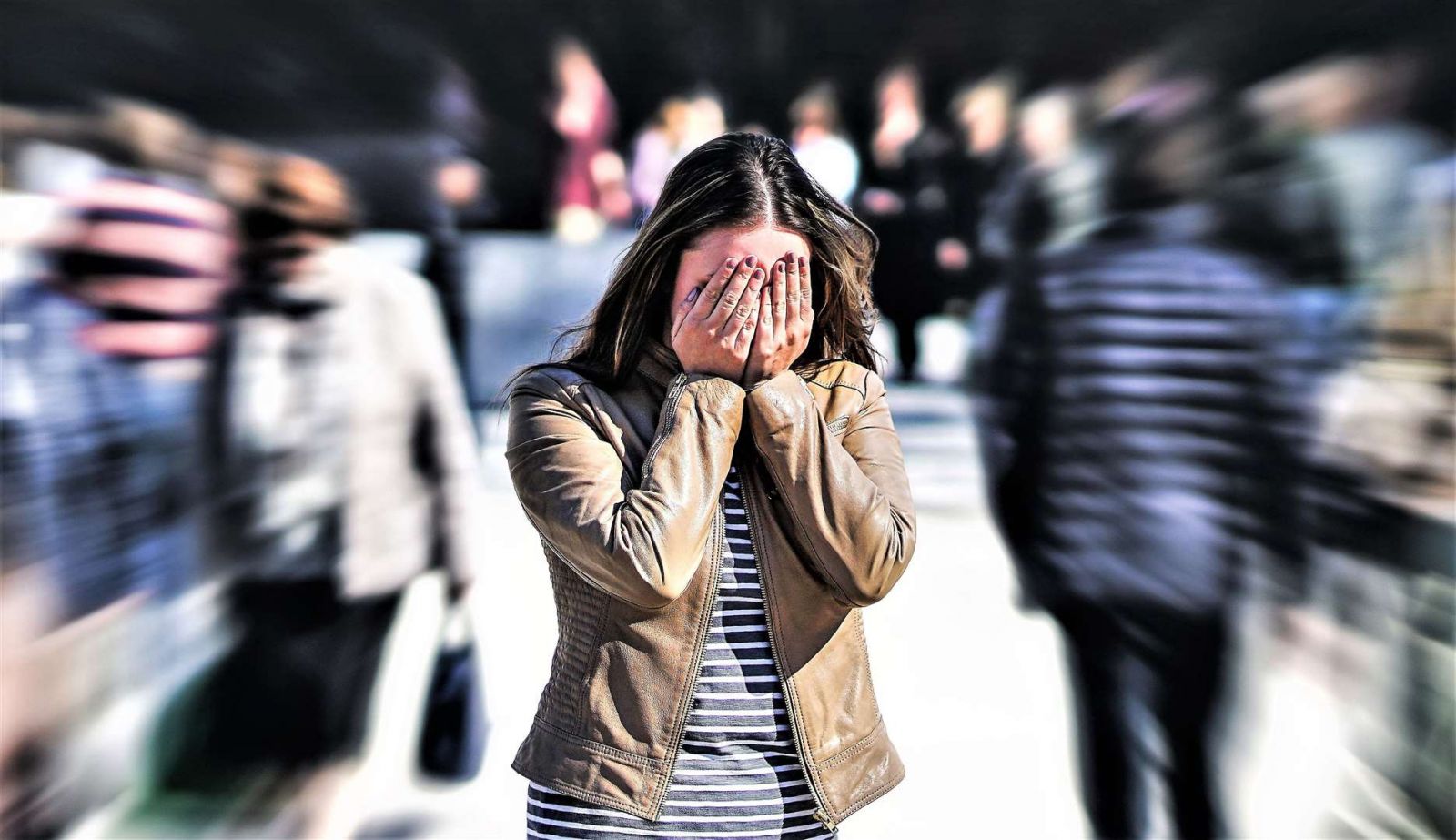
ARTON PROGRAM - The therapeutic power of the group
Creative projects involving group work - general musical performance or group painting, collage, sculpture - are useful in helping to explore and strengthen social...

If you are suddenly experiencing an episode of intense anxiety and fear that sets off physical reactions with no apparent reason, you have an episode called a panic attack. Multiple occurrences of this extremely common health issue are indicative of panic disorder, which can be very problematic and frightening. Constant fears of going crazy, having a heart attack or dying are just some examples of panicked thoughts that may disrupt your everyday activities.
Panic disorders are often classified into six types, including anxiety disorders, phobias and more.
Fear and worry are the two chief characteristics of panic disorder. Even with the absence of actual danger, affected individuals undergo physical reactions, such as nausea, heavy breathing and shaking, as if some sort of threat is imminent. These people also suffer from constant worry about when the next panic attack will occur.
When you are disturbed by bad things but the chances of them actually happening are very slim, you may have generalized anxiety disorder. Under such conditions, you may also simply feel worried all the time without any justification. These anxieties are so abnormal they become an impediment to your daily routines and your ability to unwind.
Another example of panic or anxiety disorder is obsessive-compulsive disorder. Characteristics include unwanted behaviors and thoughts that overwhelm your self-control. For instance, your mind can’t help but worry if you have turned off the iron or stove before leaving the house. You may also feel the compulsion to excessively repeat certain routines such as the simple washing of hands.
The fearing of specific objects, activities and scenarios to an exaggerated degree are phobias. Your fright tends to be out of proportion even if the things you fear hardly pose any danger. Common examples are fear of heights, flying, insects and snakes. People with phobias often desperately avoid the things that frighten them, as the confrontation of the things often makes their condition even worse.
Also called social phobia, social anxiety disorder is characterized by the extreme fear of getting a bad reputation. This condition tends to make individuals very shy and causes them to steer clear of social interactions for fear of getting embarrassed in public. Stage fright is a prime example of social phobia.
Traumatic events such as near-death experiences or participation in a war may cause people to feel sad, frightened and detached from other people. With post-traumatic stress disorder, such negative effects persist for long periods and lead to hypervigilance and an inability to live normally.
According to the American Psychological Association, the exact causes of panic or anxiety attacks remain unclear. On the other hand, some studies point to genetic and biochemical origins. The attacks are also often associated with phobias, substance abuse, depression and suicide risk.
A single occurrence of panic is nothing to worry about. Only when panic attacks become repeated episodes and cause a major change in one’s day-to-day activities do they become a problem.
Suffering from repeated panic attacks certainly affects the emotional health of an individual. Besides inexplicable fear and anxiety, common emotional symptoms of anxiety and panic attacks include the following:
Anxiety and panic attacks also have physical manifestations. The symptoms that people experience include the following:
A typical episode of panic-related anxiety only lasts up to 10 minutes. During the onset, the individual suffers from the physical and emotional short-term effects mentioned in the previous sections. Headaches, discomfort and lightheadedness are also common.
When the panic-related anxiety becomes a chronic issue, the person starts to experience detrimental long-term effects. For instance, the combination of tension, lack of sleep and fear lessens the effectiveness of the immune system, the result of which is the increased likelihood of getting an infection. The increase in blood pressure has negative repercussions for the heart and kidneys. You may also soon suffer from depression and difficulty eating.
While doctors make use of medical histories and physical exams as part of their evaluation in order to diagnose panic disorder, you can also administer self-screening for such a condition. These tests typically require listing the symptoms you felt, taking note of consequences felt after the panic attack, and mentioning how often you felt depressed, guilty and more. Even though these tests can be done personally, the results must still be forwarded to a credible healthcare professional for an accurate assessment. To find a professional near you, call us at .
With medication, you or a loved one with anxiety issues can ease off some of the symptoms. While they can be helpful, anti-anxiety drugs are known to have side effects and safety concerns.
Doctor sometimes prescribe antidepressants to address the issue of recurring panic attacks, although these drugs take a couple of weeks to take effect. Alternately, you may be prescribed benzodiazepines. These drugs can bring quick results and may provide a speedy recovery from ongoing panic attacks.
In an article by the National Center for Biotechnology Information, it is stated that anti-anxiety drugs have been found to have adverse effects. Common side effects of antidepressants include weight gain, upset stomach, nausea, sexual dysfunction, sleepiness, headaches and more. Benzodiazepines can cause over-sedation and lead to addiction.
Despite the absence of significant side effects, benzodiazepines are known to be highly addictive and have major withdrawal symptoms. Antidepressants also have dependence and withdrawal issues. When you suddenly stop taking the latter, for instance, you may undergo extreme depression and exhaustion. Symptoms similar to the flu may also be apparent.
Medications used to treat anxiety are proven to be safe when taken alone. Large doses also rarely pose any complications. However, combining the medications with alcohol, painkillers or sleeping pills isn’t recommended because the combination poses a lethal risk. Certain groups of people, such as the elderly and pregnant women, are also prone to serious side effects.
People with anxiety disorders are also found to be depressed quite often. As statistical studies have indicated, almost 50 percent of people who have been diagnosed with depression are also afflicted by anxiety disorder. Fortunately, both problems can be addressed either separately or together. Given that both conditions have some differences in emotional and physical symptoms, one must also be aware that depression and anxiety aren’t the same.
On a related note, panic or anxiety is also known to be an underlying cause of certain addictions that are observed in people. Both issues – the panic disorder and the addiction issue – must be treated simultaneously to increase the chances of long-term recovery.
You should be aware that in certain situations panic attacks may be unavoidable. A healthy combination of daily exercise and a balanced diet helps lessen the likelihood of a panic attack. Avoiding caffeinated beverages and taking herbal remedies may also help reduce stress and decrease the symptoms. It is important to find help on treating panic disorder for you or your loved one.
Recovering from panic disorder is difficult, if not impossible, without outside help. You can call us at to discuss panic disorder treatment options. In the meantime, you can start by creating an action plan to alleviate your anxiety, fear and panic attacks.

Creative projects involving group work - general musical performance or group painting, collage, sculpture - are useful in helping to explore and strengthen social...

In the ARTON Program our team of oncopsychologists, art therapists and music therapists develops the process of children's creativity as a process of...

In ARTON sessions, creating a piece of music or a song is an emotional experience of coping and satisfaction for the participating children. They make friends with...

Painting provides patients with a spontaneous, plastic method of depicting thoughts and experiences. Painting with paints is not as structured as with pencil or...










